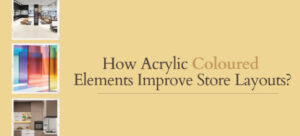
Aluminium composite panels are powerful, dependable, and long-lasting in addition to giving the impression of being lightweight. Aluminium facade solutions help numerous architects exactly realise their concepts. Because of the wide range of colours and shapes available, even the most featureless building can be given a personality and character through a unique architectural design.
The qualities, traits, and benefits of the aluminium composite panels used to cover building surfaces enable the creation of unique architectural designs. The use of aluminium for home exteriors has been completely proven through extensive testing and has been demonstrated to be both attractive and useful. Aluminium panels are widely used in the modern construction of practically every imaginable building and structure design.
Why are ACP sheets a preferred option for architects?
Adding ACP panels to a building’s exterior is a common way to increase its value and improve its appearance. The characteristics that make it so popular are listed below:
- They are long-lasting materials for innovative solutions: As previously mentioned, the use of aluminium composite materials facilitates the creation of shapes that can be challenging to achieve with other facade materials. Using aluminium panels will enable you to achieve a highly functional and aesthetically pleasing appearance. Aluminium panels are highly versatile and can be utilised in situations where other materials might not be suitable. Aluminium composite panels are highly durable and have a long lifespan.
- A highly cost-effective solution: Aluminium composite panels are a highly cost-effective solution for constructing building facades. As panels are lightweight, there is no requirement for numerous fixation points, resulting in reduced labour and material costs. In addition to easy installation and fixation, the maintenance cost is also very low.
- Require very little maintenance: When compared to maintaining wood, steel, or concrete walls, the cost and effort required to maintain aluminium cladding systems is almost negligible. In addition, aluminium composite panels do not require frequent cleaning and the maintenance is quite simple. In order to remove the soil, you should rinse it with water using moderate pressure. If that does not effectively remove the soil, other methods can be used to do the cleaning. We recommend that you get in touch with your suppliers or contractor before attempting to carry out a cleaning process on your own.
- Significantly lighter than other composite materials: Aluminium is classified as a lightweight material, making it ideal for cladding structures. Compared to steel, aluminium is 66% lighter, making it a perfectly suitable alternative.
- Available in different colours: Aluminium panels are capable of being cut, sheared, bent, punched, drilled, and profiled. While they are available in standard sizes, they can be customised by cutting them to meet the specific requirements of the users. All panels are available in various standard colours and textures like wooden mirrors, brush steel, etc. It is also possible to match the colour of your brand or company themes through colour matching.
- Panels serve many different purposes: Thermo, acoustic, and wind shielding, seismic safety, and fire protection are all beneficial features offered by aluminium covering systems and panels. In addition to their practical value, some of these attributes also help cut costs by consuming less energy. They also prevent damage, are simple to clean, are corrosion-resistant, and can be recycled.
Conclusion:
Aluminum composite panels (ACP) are favored by architects because they last long, can be used in a variety of applications, are inexpensive, need little in the way of upkeep, are lightweight, and can be found in a wide range of colors and patterns. Building facades are an ideal use for ACPs because their durable materials allow for the fabrication of unique patterns that would be difficult to create with traditional construction supplies. ACPs also provide insulation against weathering, noise reduction, protection from earthquakes, and fire prevention. These panels are not only recyclable but also simple to set up and maintain. Their increased worth and enhanced aesthetic appeal have made them a favorite among contemporary architects.
















